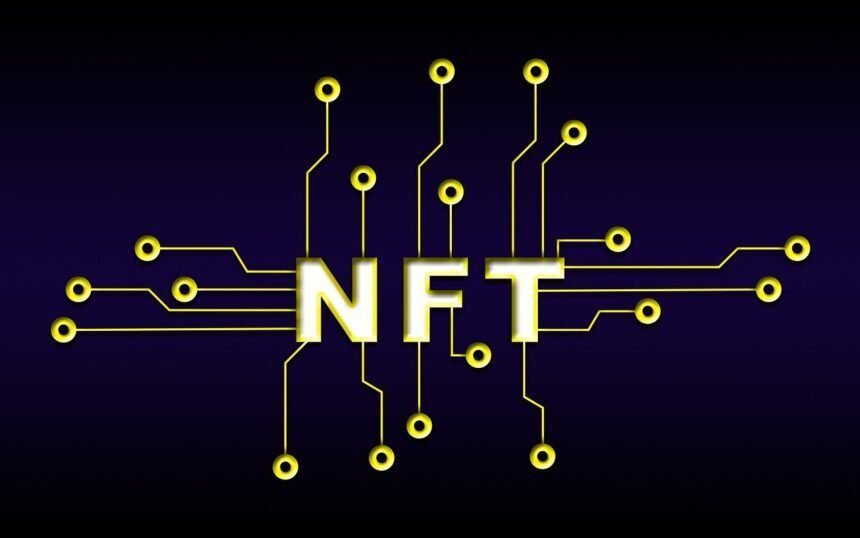The popularity of NFTs (Non-Fungible Tokens) has expanded tremendously, allowing artists a way to promote and sell digital art in novel ways. For artists in India, starting an NFT can be a lucrative path, allowing them to reach a worldwide audience and monetize their creative work digitally. This step-by-step guide will help artists understand how to launch their first NFT in India.
1. Understand What NFTs Are
Before getting into creating an NFT, it’s necessary to understand what NFTs are. NFTs are unique digital assets that represent ownership or proof of authenticity of a digital property like artwork, music, or videos. These tokens are stored on the blockchain, which verifies their originality and monitors their ownership over time.
- Blockchain: NFTs are usually constructed on the Ethereum blockchain, although other blockchains like Polygon, Binance Smart Chain, and Solana are also popular in the NFT space.
- Non-Fungible: Unlike cryptocurrencies (Bitcoin, Ethereum), which are interchangeable, NFTs are one-of-a-kind, meaning no two NFTs are the same.
2. Choose Your Artwork
The next step is to select the digital artwork or item you want to tokenize as an NFT. It might be anything from digital art, animations, music, photography, or even GIFs. Ensure the artwork is original and resonates with potential purchasers. Many NFT purchasers are looking for digital content that stands out in terms of creativity, story, or uniqueness.
- Format Considerations: Common formats for digital artwork include JPEG, PNG, GIF, MP4, and MP3 for music-related NFTs.
3. Set Up a Digital Wallet
To produce, purchase, or sell NFTs, you need a digital wallet that supports cryptocurrency. The wallet will hold your digital assets and be used to pay costs (such as gas fees) when minting NFTs. As an artist in India, you need to link your wallet to NFT platforms that enable Bitcoin transactions.
- Popular Wallets: – MetaMask: A frequently used wallet for interfacing with Ethereum-based NFT platforms.
- Trust Wallet: A versatile alternative supporting many blockchains.
- Coinbase Wallet: Great for beginners and enables secure storage.
Once set up, link your wallet to a cryptocurrency exchange (like WazirX, CoinDCX, or Zebpay) where you can acquire Ether (ETH) or other cryptocurrencies required to mint and list NFTs.
4. Choose an NFT Marketplace
There are various NFT markets where you can list your digital artwork. Each platform has its unique characteristics and user base. Some are blockchain-specific, so choose one that corresponds with your interests.
- Popular NFT Marketplaces for Artists: – OpenSea: One of the largest and most popular platforms for NFTs. Supports Ethereum, Polygon, and more.
- Rarible: Allows developers to mint their NFTs directly on the platform.
- Foundation: More artist-centric, presenting curated and high-quality NFT art.
- WazirX NFT: An India-based NFT platform where Indian artists can mint and sell NFTs, integrated with the WazirX exchange.
5. Mint Your NFT
Minting is the process of turning your digital file into an NFT on the blockchain. This process is usually assisted by the NFT marketplace you choose. Here’s how to mint your first NFT:
- Upload Your File: Choose the digital file you wish to mint and upload it to the site.
- Add Metadata: This involves adding a title, description, and tags to your NFT. Make sure the description conveys the uniqueness and story behind your artwork.
- Set Royalty Percentage: One of the perks of NFTs is that artists can earn royalties on secondary sales. Set a percentage (typically 5-10%) that you will receive every time your NFT is resold.
- Pay petrol Fees: To mint your NFT, you need to pay petrol fees. These are transaction fees paid to the network (Ethereum, Polygon, etc.) to record the transaction on the blockchain.
6. Price Your NFT
Pricing your NFT is a key decision that might determine its marketability. Factors to consider include the rarity of the artwork, the demand for your work, and the fees associated with minting and selling.
- Fixed Price vs Auction: – You can either sell your NFT at a fixed price or put it up for auction, where purchasers can bid, and you can sell it to the highest bidder.
- For auctions, select a minimum bid that reflects the worth of your art.
7. Promote Your NFT
Once your NFT is up on the marketplace, the following step is to promote it to potential purchasers. Social media is a powerful method to display your NFT and obtain visibility.
- Platforms to Promote Your NFT: – Twitter: The crypto community is particularly active here. Use appropriate hashtags like #NFTart and #NFTs.
- Instagram: Great for showing visual artwork. Engage with your followers and share the narrative behind your NFT.
- Discord: Many NFT marketplaces and groups have active Discord channels where you may communicate with collectors.
- Telegram: Join crypto and NFT-focused communities in India to access an active audience.
8. Understand the Legal and Tax Implications
In India, NFTs are still a relatively new space, and there are legal and tax factors to keep in mind. As of 2024, crypto and NFTs are taxed under the Indian Income Tax Act.
- Capital Gains Tax: The selling of NFTs is subject to capital gains tax in India. Consult a tax specialist to discover how much tax you need to pay on profits produced from NFT sales.
- GST (Goods and Services Tax): Some platforms might levy GST on transactions. It’s vital to be aware of the tax ramifications to keep compliant with local legislation.
9. Monitor and Manage Your NFT Sales
Once your NFT is live and being promoted, keep a watch on the marketplace for bids and offers. Most platforms will alert you when someone puts a bid or acquires your NFT. Be responsive to potential buyers and communicate with your audience to create trust and credibility in the sector.
- Secondary Market: Monitor secondary sales of your NFT and track the royalties you collect from future transactions.
10. Continue Building Your NFT Portfolio
To retain momentum, consider regularly producing and minting fresh NFTs. The NFT space is highly competitive, and remaining active helps you create a name and attract collectors.
- Collaborations: Partnering with other artists or influencers in the NFT field can help you reach new audiences and increase your visibility.
Conclusion
Launching an NFT as an artist in India is a wonderful opportunity to get into the booming digital art market and reach a worldwide audience. By knowing the NFT ecosystem, picking the correct platform, promoting your work efficiently, and staying compliant with local legislation, you may successfully commercialize your creativity and make a name in the NFT world.
As NFTs continue to increase in popularity, they provide a novel opportunity for artists to get recognition and create cash in the digital age.






